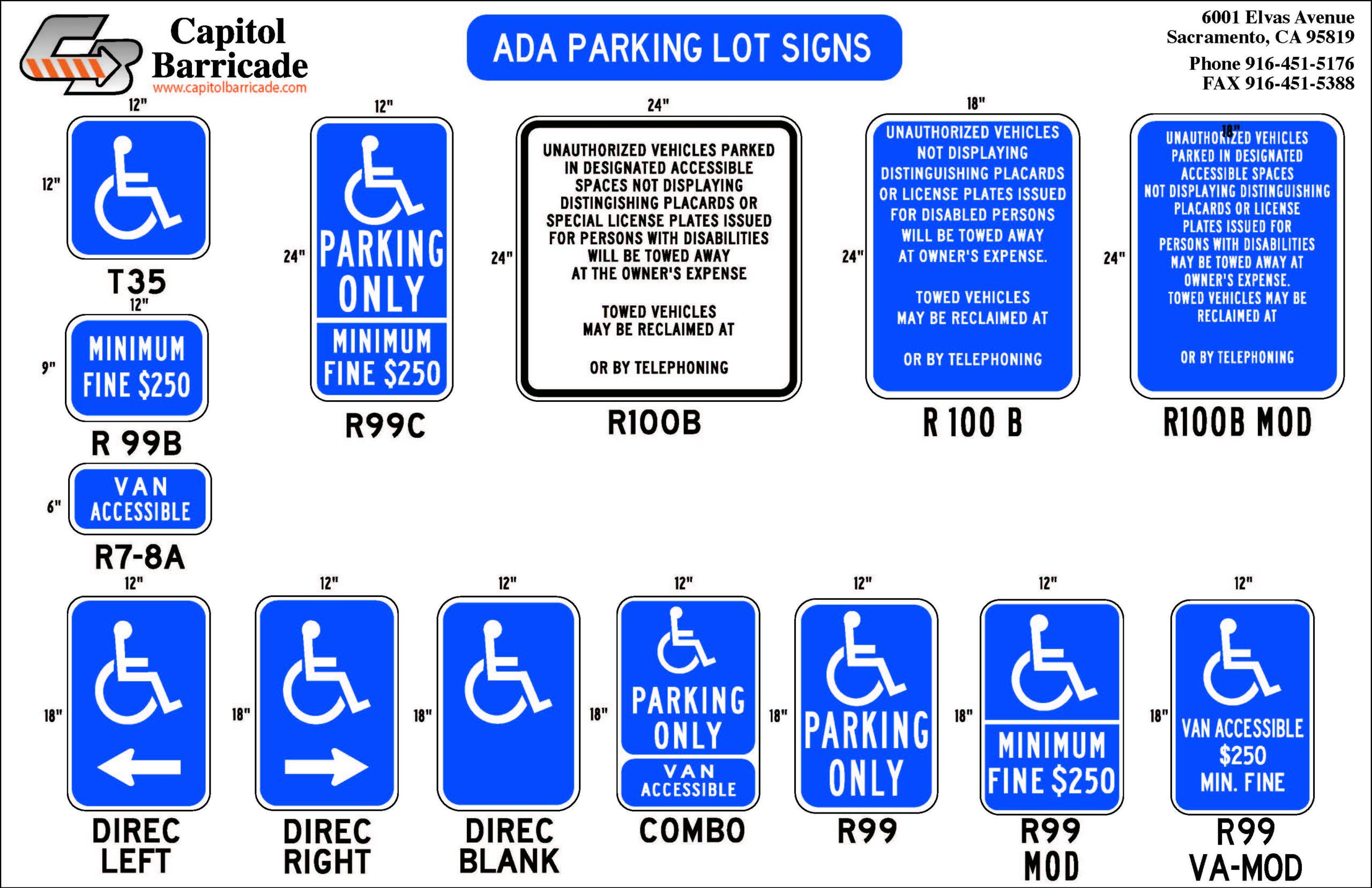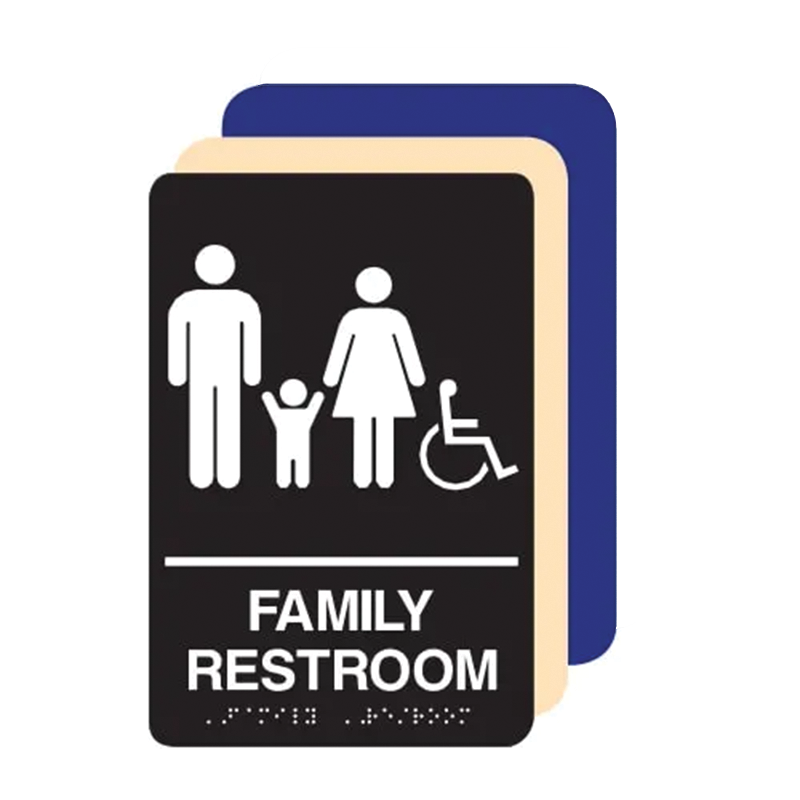Check out the Significance of ADA Signs in Public Spaces
Wiki Article
Discovering the Key Features of ADA Signs for Improved Accessibility
In the realm of accessibility, ADA indicators function as quiet yet powerful allies, making certain that rooms are navigable and comprehensive for people with specials needs. By integrating Braille and tactile aspects, these indicators damage obstacles for the visually damaged, while high-contrast color pattern and legible font styles accommodate varied aesthetic demands. Their strategic placement is not approximate yet instead a calculated initiative to help with smooth navigating. Beyond these attributes exists a deeper narrative about the advancement of inclusivity and the ongoing commitment to producing fair areas. What more could these indicators symbolize in our quest of universal ease of access?Significance of ADA Compliance
Making certain compliance with the Americans with Disabilities Act (ADA) is essential for cultivating inclusivity and equal accessibility in public areas and workplaces. The ADA, established in 1990, mandates that all public facilities, companies, and transport services fit individuals with disabilities, guaranteeing they delight in the very same legal rights and possibilities as others. Conformity with ADA criteria not only meets legal responsibilities yet likewise improves a company's reputation by demonstrating its dedication to variety and inclusivity.One of the vital elements of ADA conformity is the implementation of accessible signs. ADA indicators are developed to make certain that individuals with specials needs can easily browse with buildings and spaces.
Furthermore, adhering to ADA guidelines can alleviate the danger of potential fines and lawful consequences. Organizations that stop working to abide by ADA standards may encounter suits or fines, which can be both damaging and monetarily troublesome to their public photo. Therefore, ADA conformity is essential to promoting a fair setting for every person.
Braille and Tactile Aspects
The incorporation of Braille and responsive elements into ADA signs embodies the concepts of ease of access and inclusivity. It is typically put underneath the matching message on signs to make sure that people can access the details without visual support.Tactile aspects extend beyond Braille and consist of elevated personalities and symbols. These parts are made to be noticeable by touch, permitting people to determine space numbers, bathrooms, leaves, and various other crucial areas. The ADA establishes details guidelines pertaining to the size, spacing, and positioning of these tactile elements to optimize readability and guarantee consistency throughout different atmospheres.

High-Contrast Color Pattern
High-contrast color design play a pivotal duty in improving the visibility and readability of ADA signage for people with visual problems. These plans are important as they take full advantage of the distinction in light reflectance in between text and history, making sure that signs are easily noticeable, even from a range. The Americans with Disabilities Act (ADA) mandates using certain color contrasts to suit those with restricted vision, making it an essential facet of compliance.The effectiveness of high-contrast colors depends on their ability to attract attention in various illumination problems, consisting of dimly lit atmospheres and areas with glow. Typically, dark message on a light background or visite site light text on a dark history is used to attain ideal comparison. Black text on a yellow or white history offers a stark aesthetic distinction that aids in quick recognition and understanding.

Legible Fonts and Text Size
When taking into consideration the design of ADA signage, the choice of clear font styles and ideal text size can not be overstated. These elements are important for making sure that signs are easily accessible to people with aesthetic disabilities. The Americans with Disabilities Act (ADA) mandates that font styles need to be sans-serif and not italic, oblique, manuscript, very ornamental, or of uncommon form. These needs help make certain that the message is conveniently legible from a distance and that the characters are distinguishable to diverse target markets.The dimension of the message also plays an essential function in ease of access. According to ADA standards, the minimal text elevation should be 5/8 inch, and it must enhance proportionally with viewing range. This is particularly crucial in public areas where signage requirements to be read promptly and precisely. Consistency in message size adds to a natural visual experience, aiding people in navigating atmospheres efficiently.
Additionally, spacing between letters and lines is essential to legibility. Appropriate spacing avoids personalities from appearing crowded, boosting readability. By adhering to these criteria, designers can dramatically improve access, making certain that signs offers its intended function for all people, regardless of their visual capacities.
Efficient Positioning Techniques
Strategic placement of ADA signage is necessary for taking full advantage of accessibility and ensuring compliance with lawful criteria. ADA standards stipulate that indications should be mounted at an elevation in between 48 to 60 inches from the ground to ensure they are within the line of view for both standing and seated people.Additionally, indicators should be placed adjacent to the lock side of doors to enable very easy identification before entrance. This positioning helps individuals locate spaces and rooms without obstruction. In cases where there is no door, indications ought to be situated on the nearest adjacent wall. Consistency in indication positioning throughout a center improves predictability, lowering complication and enhancing total customer experience.

Conclusion
ADA indicators play a crucial role in promoting access by incorporating functions that attend to the requirements of individuals with impairments. Integrating Braille and tactile components makes certain essential details comes to the visually damaged, while high-contrast color systems and clear sans-serif typefaces improve exposure across numerous lights conditions. Reliable positioning approaches, such as suitable placing elevations and strategic places, additionally promote navigation. These aspects collectively promote a comprehensive environment, highlighting the significance of ADA compliance in ensuring equivalent access for all.In the realm of availability, ADA signs serve as quiet yet effective allies, guaranteeing that rooms are inclusive and accessible for individuals with impairments. The ADA, established in 1990, mandates that all public centers, companies, and transportation services suit people with specials needs, ensuring they enjoy the exact same legal rights and chances as others. ADA Signs. ADA indicators are made to guarantee that people with specials needs can easily browse through spaces and buildings. ADA standards specify that indications need to be installed at a height between 48 to 60 inches from the ground to guarantee they are within the line of view for both standing and seated individuals.ADA signs play an essential duty in promoting access by incorporating features that deal with the demands of individuals with handicaps
Report this wiki page